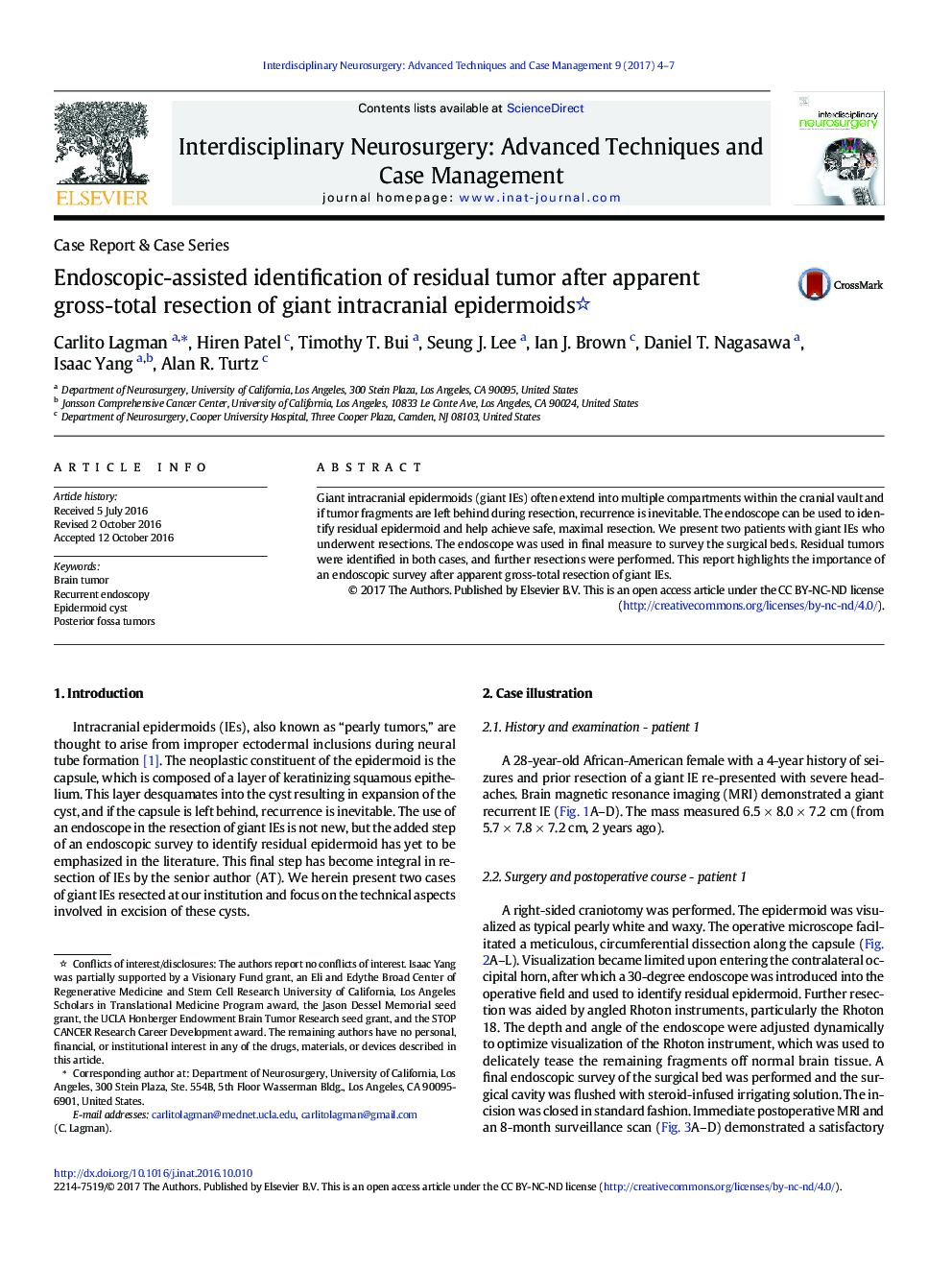| Article ID | Journal | Published Year | Pages | File Type |
|---|---|---|---|---|
| 5629426 | Interdisciplinary Neurosurgery | 2017 | 4 Pages |
â¢The added step of an endoscopic survey to identify residual epidermoid has yet to be emphasized in the literature.â¢Integration of this step is necessary to quell the need for repeat surgery and associated surgical morbidity.â¢We define giant IE as measuring equal to or greater than 5.0 cm in at least one standard plane of measurement.
Giant intracranial epidermoids (giant IEs) often extend into multiple compartments within the cranial vault and if tumor fragments are left behind during resection, recurrence is inevitable. The endoscope can be used to identify residual epidermoid and help achieve safe, maximal resection. We present two patients with giant IEs who underwent resections. The endoscope was used in final measure to survey the surgical beds. Residual tumors were identified in both cases, and further resections were performed. This report highlights the importance of an endoscopic survey after apparent gross-total resection of giant IEs.
